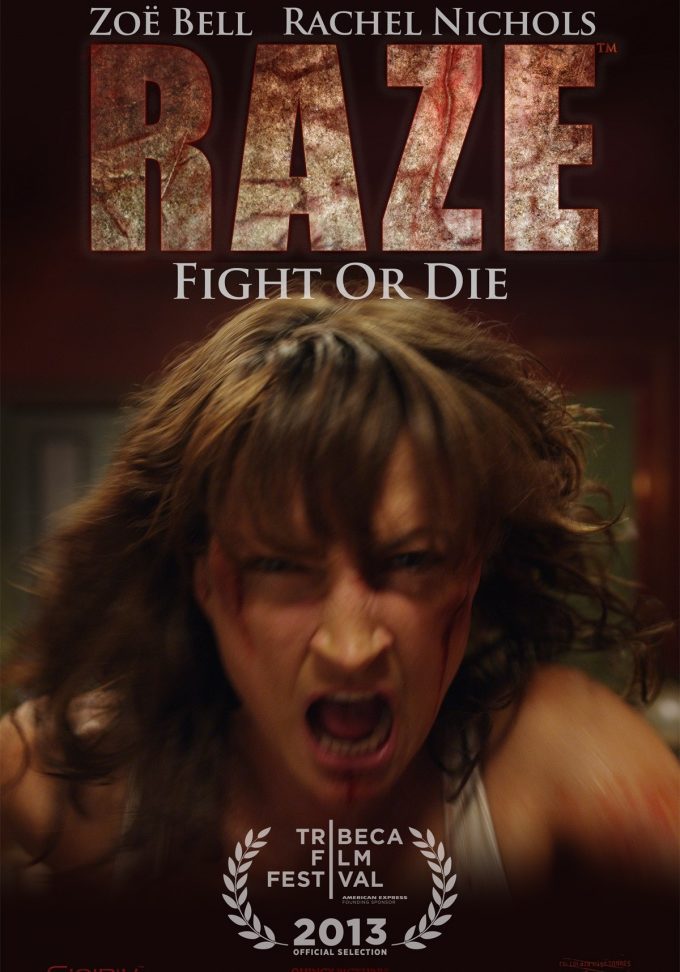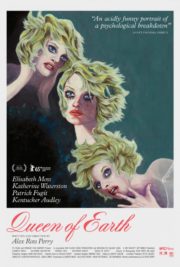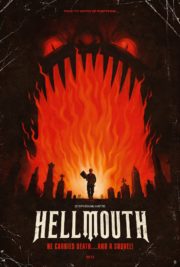“Fight or Die: The Grim Dance of ‘Raze'”
Imagine being forced into a fight for your very survival, not for glory, not for honor, but for the amusement of others. This is the chilling core of “Raze,” a 2013 horror-thriller directed by Josh C. Waller that pits women against one another in a brutal underground battle to the death. Without spoiling, “Raze” follows the story of Sabrina, portrayed by stuntwoman-turned-actor Zoë Bell, who, along with other women, is kidnapped and compelled to fight. The stakes are made viciously clear: lose the fight, and a loved one dies. It’s a raw, low-budget gladiatorial contest set in contemporary times. Now, let’s step into the arena where the film’s true horror is staged.
A Claustrophobic Nightmare
The atmosphere of “Raze” is drenched in despair and claustrophobia. The horror does not stem from supernatural entities or monsters but the monstrous capacity for violence within us all, triggered by desperate circumstances. The film’s tone is relentlessly severe, using a stark setting almost entirely within the confines of a windowless, concrete prison to heighten the sense of foreboding. Suspense is woven through moments of silence before the sudden eruptions of violence, although the repeated battles can at times feel numbing rather than nerve-wracking.
Within the Shadows
The cinematography in “Raze” is straightforward, grim, and gritty, designed to accentuate the griminess of both the environment and the fight for survival. Lighting is often harsh and unforgiving, casting deep shadows to mirror the darkness of the situation. Camera angles are effectively used to intensify the brutal nature of the combat and the isolation of the arena. While there are no groundbreaking visual techniques, the simplicity of the visuals serves the story without distracting from the raw action. The absence of significant special effects roots the film in a more realistic and therefore more horrifying possibility.
Sound design in “Raze” does a commendable job of accentuating impact. The blows hit hard, bones crunch, and every strained breath of the combatants is felt, amplifying the visceral nature of their struggle. There’s a minimalistic approach to the score, with silent tension-building sequences making the eventual outbreak of violence all the more jarring when only natural fight sounds fill the room.
Performances Born of Survival
The performances, particularly by Zoë Bell, give the film its emotional heft. While character development takes a backseat to the action, the actors manage to project a tangible sense of dread and determination through their physicality. Bell’s own background as a stunt performer lends authenticity to her role, making the fight scenes painfully believable. However, the lack of narrative for the characters at times undercuts the potential connection the audience could have with them.
The Horror of Humanity
“Raze” slots into a subtype of horror that relies on the psychological impact of violence and the horror found in forced human confrontation. There is a distinct focus on body horror, but not of the grotesque transformation kind. Instead, it’s the wince-inducing realism of physical combat, the breaking of bodies and spirits. This film challenges horror conventions by stripping away layers of fantasy and playing on the palpable fear of pain and death.
The fright tactics employed here are a mix, none being overly complex. Psychological dread comes from the ‘fight or be killed’ mantra and the moral implications that come with it. However, the more pronounced methods are the raw, up-close-and-personal encounters that descend into bloodshed, which can sometimes feel repetitive rather than progressive in terms of fear factor.
Underneath the surface, “Raze” touches upon themes of empowerment, sisterhood, and the vicious nature of spectacles of violence. It dimly mirrors societal voyeurism and entertainment found in witnessing conflict but does not delve deeply into these aspects, missing an opportunity for richer commentary.
“The Resonance of the Ring: Raze’s Place in Horror”
“Raze” provides a gritty, ground-level view of horror that could resonate with fans of physical, survival-based thrillers. It’s an unrelenting film that’s more punishing than scary, aligning itself with the likes of “Hostel” rather than “The Conjuring.” While its innovative intent can be appreciated, it may not stand out as groundbreaking to the well-versed horror enthusiast.
The movie would particularly appeal to viewers who favor action-packed, fight-centered films and are less interested in narrative depth. Moreover, fans of Zoë Bell and her stunt work may find enjoyment in her robust interpretation of the lead role.
In comparison to other horror works, “Raze” doesn’t quite reach the iconic status of movies like “Saw,” which also leverages the horror of survival scenarios but with a more intricately woven plot and psychological edge.
A Gladiatorial Verdict
Ultimately, “Raze” is a film with a strong foundation but not without its shortcomings. Its direct approach to the horror genre may either be its strength or its main weakness, depending on the viewer’s tastes. It’s raw and relentless, perhaps excessively so, with moments that could benefit from more variance or emotional depth. With solid performances and a palpable sense of danger, it still manages to deliver a punch. Film-goers in search of complex narratives or supernatural frights might find it lacking, while those intrigued by the limits of human endurance will find “Raze” worth a watch, albeit with a caution for graphic violence and intense hand-to-hand combat scenes.




